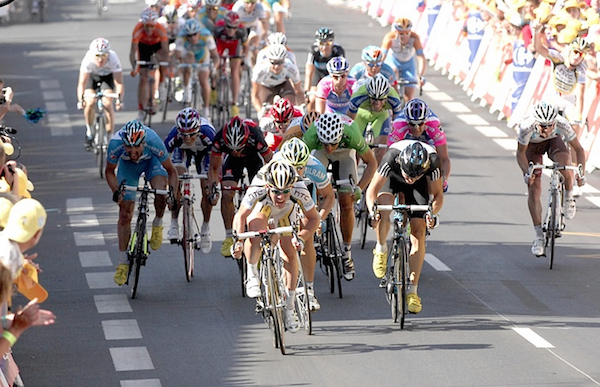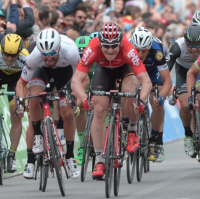In part 3 of our high-intensity cueing series, I provided cues for short, very high-intensity efforts of less than a minute that are not sprints. In this final edition of creative high-intensity cueing, you’ll learn how to cue for sprints. Sprints are probably the most misunderstood and miscued technique in indoor cycling classes around the globe.
I hope you have read and taught Tom Scotto’s profile HIT IT. In that profile, you learn the specific technique for teaching sprints properly.
Explosive efforts
An explosive sprint uses the immediate ATP-CP system of available energy. There is only enough ATP-CP stored in the muscles to last 10 to 30 seconds (the difference in duration lies in one’s genetics and level of training).
A sprint is a maximal effort requiring a high gear and a powerful surge of effort. Power implies force AND velocity, not just fast legs spinning around at 140 rpm with very low gear. Unfortunately, those crazy uncontrolled legs with little to no resistance is what is most prevalent in classes around the world.
The explosiveness of the move is required to overcome the bigger gear. Cadence meters might even register a very high cadence (above 120 rpm) for one or two pedal strokes at the very start of a sprint (a second or two), but should quickly fall to an acceptable level. This is due to the fact that a good sprint involves adding body weight to the equation and stomping on the pedals during the acceleration. This brief spike in cadence can be ignored.

Like all short anaerobic efforts, heart rate is not applicable for sprinting. It is pure and simply as hard as one can go against a resistance. Try some while wearing your heart rate monitor—you will see your heart rate will not have time to rise until after you are done. Even then, it may not go very high at all, simply because there is not enough time for the heart to react.
For the shorter efforts of 10 to 20 seconds, the body is on autopilot, the mind barely has time to realize what is happening. These efforts are painful, there is no other way to describe it. If they are not uncomfortable, then they are not doing what you are asking.
While you can certainly use some of the cues listed in the 30- to 60-second efforts—especially the motivational ones—the cues below are specific to the explosive power required of a true sprint. I think you and your riders will get a kick out of the bonus cue at the end!
Cues specific to sprints


Awesome! Great cues. Flushing the toilet…love it!
Love the bonus cue;)
it’s a fun one! Every time I’ve used it people giggle, but they GET IT! And that’s the best part—when you know you’ve reached them, especially when you’ve noticed previously they didn’t quite “get it”.